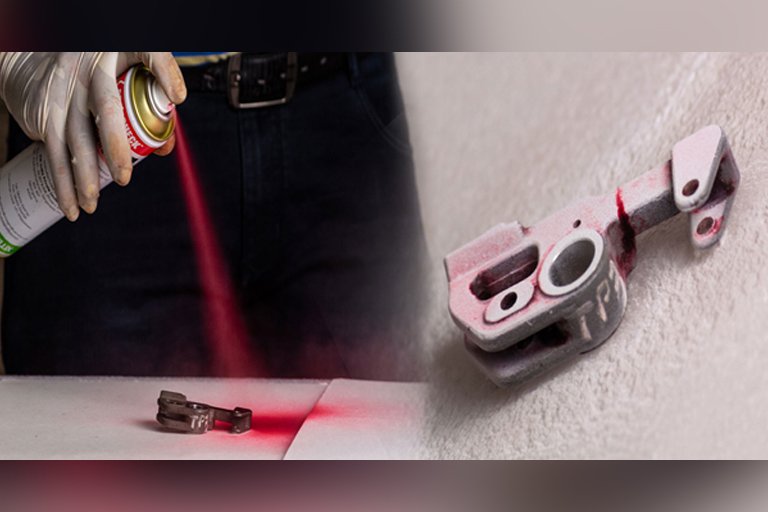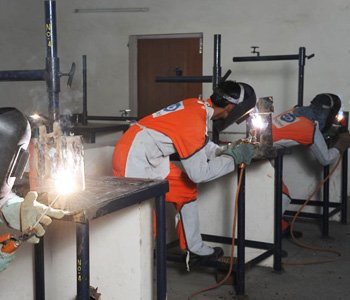Ultrasonic testing very short Ultrasonic pulse waves are launched into the materials to detect internal flaws or to characterize materials and also commonly weld to determine the thickness of the test object, to monitor pipe work corrosion.


Radiography can be used to image the parts or functions of the body by measuring and interpreting the response to the radiographic input. In this manner many bone fractures & diseases may be detected and localized in preparation for treatment the same technique is been implemented in industrial radiography but using some high intensity radiations.
A very early inspection technique involved the rubbing of carbon black our glazed pottery, where by the color black would settle in surface cracks rendering them visible late it is been practiced as 'oil & whiting method. In 1940's magnaflux in Chicago developed this method using highly visible red color dye known as color contrast dye Penetrant method.


In the early 1920's William hoke realized that magnetic particles could be used with magnetism as a means of locating defects. He discovered that surface & subsurface flaws in a magnetized material caused the magnetic field to distort and extend beyond the part the image shows the electromagnetic steel testing device developed in 1928.
The basic ability that an inspector should posses is visual acuity. This is a crucial method in NDT which is too often over looked. An visual inspection of an operational plant can often reveal obvious problem areas such as leaks, excess vibration, corrosion or misalignment. If the inspector don't have the access VT can be done by using visual aids such as borescope, mirrors, closed-circuit tv, optical borescope etc…


Qtech Institute of Welding Technology is a Leading Provider of the ASME, AWS D1.1, API, DIN etc., Training of Personnel. Qtech Works to Human Resource Development in Welding through Training of Personnel as Per ASME & AWS D1.1.
Qtech is Situated in Well Connected Place With Modern Classroom and Audio-Visual Aids With all Least Equipment and Infrastructure for Practical Classes.
All of our Instructors are Experienced, Welding Consultants and Well Known for Expertise in the Methods they Teach. Our training highlights are Hands on Demonstration with Equipment and through our Learning Management Platform, Students Will have Access to International Welding Syllabus Theory and Practical. Onsite Training Accompanied with our Technicians shall be Provided after Successful Completion of Course.
By producing high quality radiography, the radiographer must also be skilled in radiographic interpretation. This interpretation takes place in three basic steps.
All of these steps make use of radiographer's visual acuity. It is the ability to resolve a spatial pattern in an image. This certification helps the technician an understanding of the types of defects found in the materials and how they appear in a radiographer.


Our training courses are delivered by experienced industrial hygienists and are tailored specifically to the radiation sources used in your workplace.
Our Rope Training program equips professionals with essential skills for safe and efficient rope access operations. Designed for industries such as construction, industrial inspection, and maintenance, our training covers rope techniques, safety procedures, and emergency rescue methods. With expert guidance and hands-on practice, we ensure participants gain confidence and competence in working at heights.
Join our certified Rope Training program and enhance your career in high-access industries
